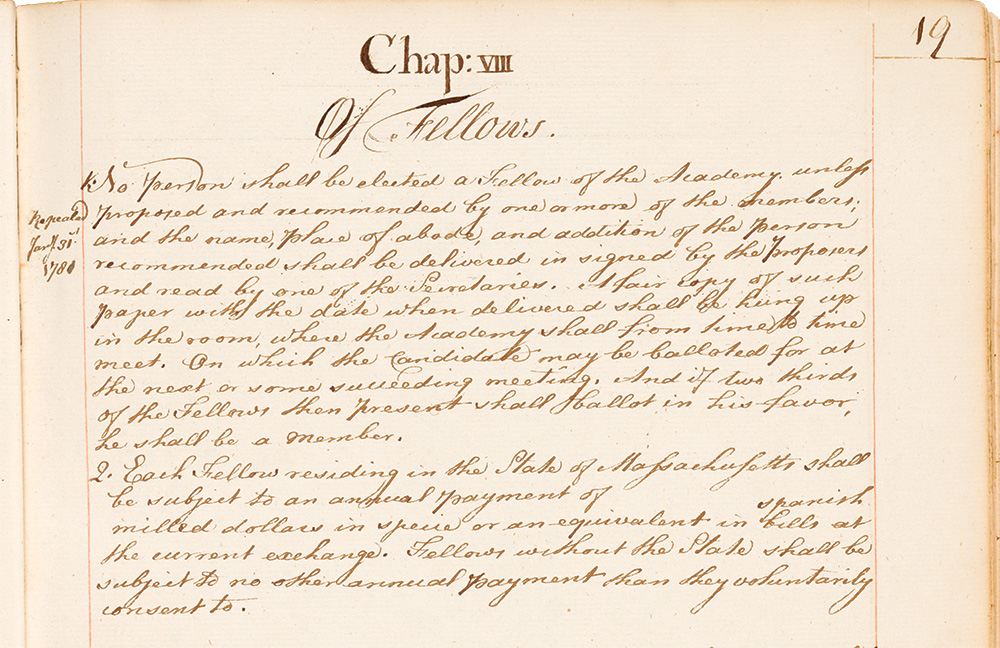The Academy and Pieces of Eight
By Michele Lavoie, Director of Archives
Among the founding documents in the Academy Archives is a large bound volume, in three parts, of manuscript minutes, dating back to the Academy’s first meeting in May 1780. In addition to attendance rolls and descriptions of business transacted at these meetings, the volume contains other documents that chronicle the establishment of the organization’s rules, regulations, and practices.
Among these are the earliest statutes that were debated and adopted by the founding members. Early drafts of these rules sometimes included blank spaces to be filled in at a later date, when all of the details had been confirmed. One such instance relates to membership dues.
In the handwritten copy of the statutes from 1780 that appears in part 1 of the volume, the scribe left a blank space for the actual amount of “spanish [sic] milled dollars” to be assessed to members who resided in the state of Massachusetts.1
Why did the American Academy originally stipulate that its membership dues should be paid in “spanish milled dollars”? According to the U.S. Mint, Spanish milled dollars were popular in the colonies prior to the establishment of official U.S. currency because the silver content tended to be consistent throughout the coins in circulation. Based on the 8-reale Spanish dollar, the currency was popularly referred to as “pieces of eight” because the coins could be cut down into smaller portions to denote lower levels of value. The coins were “milled,” or ridged along the edges, to discourage counterfeiting.
The statute for paying annually in pieces of eight was repealed in January 1781, less than a year after it was originally adopted. By May 1787, an annual dues assessment of “Two Dollars” (referring to U.S. dollars) was to be paid to the Academy by each member who resided in the Commonwealth of Massachusetts. In addition, an initial fee of five dollars was due upon election, “if belonging to the State of Massachusetts . . .; and no one shall be considered a Member, till he has made such payment, unless the Academy should think proper for special reasons to remit it. . . .”
